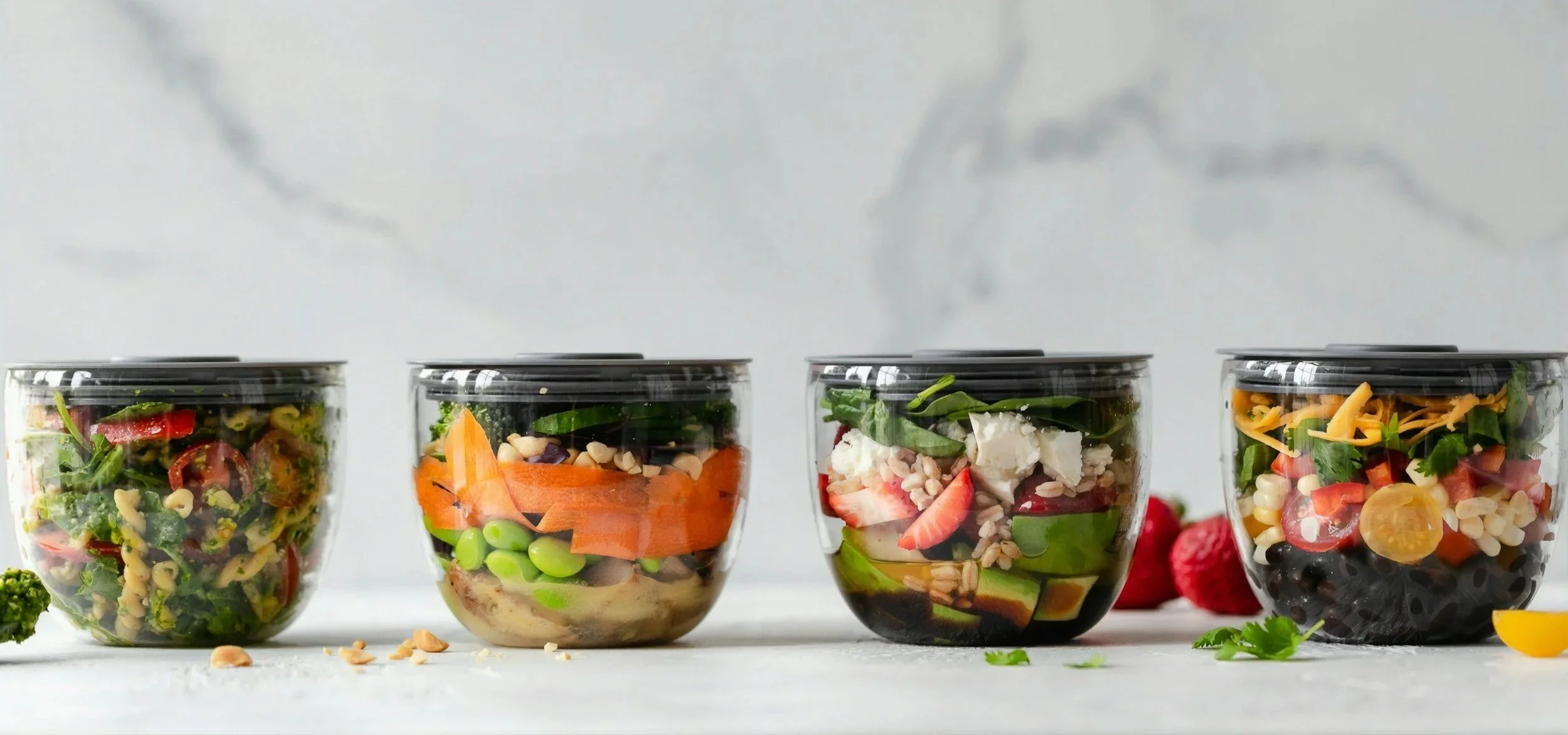Meal Prep Made Simple: Fuel Your Fitness with Science-Backed Nutrition
At RZN Athletics, we know that consistent nutrition is just as crucial as consistent training. Meal prep is one of the most effective ways to stay on track with your fitness goals, save time, and ensure your body is getting the fuel it needs. But beyond convenience, meal prep has real physiological benefits that directly impact performance, recovery, and overall health.
The Science Behind Meal Prep
When you prepare meals in advance, you gain control over your calorie intake and nutrient quality. Research shows that meal prepping leads to better diet quality, higher protein intake, and more consistent consumption of fruits and vegetables compared to unplanned eating. Planning your meals reduces reliance on fast food or impulsive snacking, which often comes with excess sugar, sodium, and unhealthy fats.
Macronutrient Balance Matters
For optimal performance and body composition, each meal should include a balance of macronutrients:
Protein: Supports muscle repair and growth. Studies suggest consuming 20–40 grams of protein per meal can maximize muscle protein synthesis. Options include chicken, fish, eggs, tofu, or legumes.
Complex Carbohydrates: Your body’s primary fuel source for high-intensity workouts. Complex carbs like sweet potatoes, brown rice, oats, and quinoa provide slow-digesting energy, keeping blood sugar stable and sustaining performance.
Healthy Fats: Essential for hormone production, recovery, and energy. Sources include avocados, nuts, seeds, and olive oil.
Fruits & Vegetables: Packed with vitamins, minerals, and antioxidants that reduce exercise-induced oxidative stress and support immune function.
Batch Cooking Made Easy: Shredded Chicken
One of the most versatile and time-saving proteins you can prep is shredded chicken. Cooking a large batch at once allows you to use it as the base for multiple meals throughout the week—giving you variety without extra work.
How to Make Shredded Chicken:
Place chicken breasts or thighs in a slow cooker, Instant Pot, or oven with your favorite seasonings (garlic, paprika, salt, pepper, and a splash of chicken broth work well).
Cook until fully done and tender (usually 3–4 hours in a slow cooker or 20–25 minutes in an Instant Pot).
Shred with two forks and divide into portions for the week.
Meal Ideas Using the Same Base:
Tacos: Toss with taco seasoning and serve with tortillas, veggies, and avocado.
Pulled Chicken Sandwiches: Mix with BBQ sauce and top with slaw on a whole-grain bun.
Salads: Add to leafy greens, roasted vegetables, and a drizzle of olive oil or vinaigrette.
Grain Bowls: Combine with quinoa, roasted sweet potatoes, and steamed broccoli for a balanced bowl.
Wraps or Quesadillas: Use as a filling with cheese, beans, and veggies for a quick lunch or dinner.
Using a single base like shredded chicken saves time, reduces decision fatigue, and ensures your meals are both nutritious and diverse, so you never get bored while staying on track with your fitness goals.
Portion Control and Consistency
Meal prep naturally encourages portion control, which is key for achieving fitness goals. Even small adjustments, like measuring protein portions or using smaller containers, can significantly impact progress over time.
Flavor and Sustainability
Rotate spices, sauces, and cooking methods to keep meals exciting while maintaining nutrient density. Meal prepping also reduces food waste and encourages mindful eating, both of which have long-term benefits for health and sustainability.
Meal Prep for Performance and Recovery
Consistency in nutrition supports workout performance and recovery. Pre-planning meals ensures you’re eating adequate protein to repair muscles, carbs to fuel workouts, and micronutrients to support recovery. Proper nutrition before and after training can improve strength gains, reduce soreness, and enhance overall energy levels throughout the day.
Hydration and Micronutrients
Meal prep is not just about food—it pairs perfectly with mindful hydration. Water supports digestion, nutrient transport, and energy production. Incorporating colorful vegetables and fruits into your meals also ensures you’re getting antioxidants and micronutrients like potassium, magnesium, and vitamin C, which help reduce inflammation and oxidative stress from training.
Getting Started:
Choose 3–5 simple recipes you enjoy.
Cook proteins, grains, and vegetables in bulk.
Portion meals into containers for easy grab-and-go options.
Rotate flavors and ingredients each week to prevent boredom.
Pair meals with consistent hydration and balanced snacks.
Meal prepping doesn’t have to be complicated. Even dedicating a couple of hours each week can dramatically improve your consistency, performance, and overall health.
At RZN Athletics, we’re committed to helping you fuel your fitness with both education and practical tools. Stop by the gym to speak with our coaches about personalized meal prep strategies, sample weekly plans, and tips to simplify your nutrition routine. Your body—and your progress—will thank you.
References
Harvard T.H. Chan School of Public Health. Protein: What is it and how much do you need? https://www.hsph.harvard.edu/nutritionsource/protein/
Academy of Nutrition and Dietetics. Meal Prepping 101: Tips for Success. https://www.eatright.org/health/wellness/meal-planning/meal-prepping-101
U.S. Department of Agriculture. Dietary Guidelines for Americans 2020-2025. https://www.dietaryguidelines.gov/
Schoenfeld, B. J., & Aragon, A. A. (2018). How much protein can the body use in a single meal for muscle-building? Journal of the International Society of Sports Nutrition, 15(1), 10. https://jissn.biomedcentral.com/articles/10.1186/s12970-018-0215-1
Smith, M. et al. (2019). Meal Frequency and Composition for Optimal Performance and Recovery. Nutrients, 11(7), 1527. https://www.mdpi.com/2072-6643/11/7/1527

